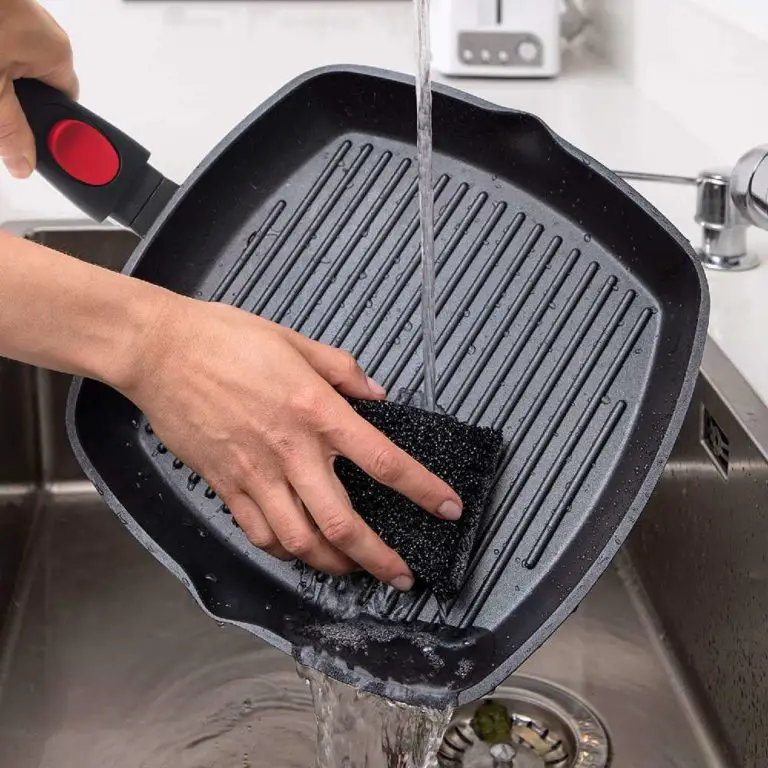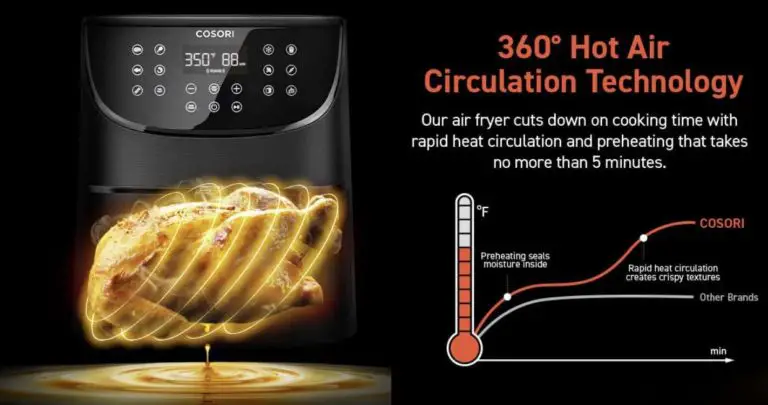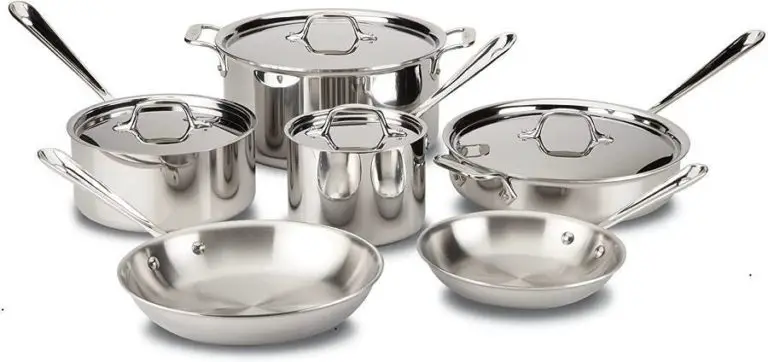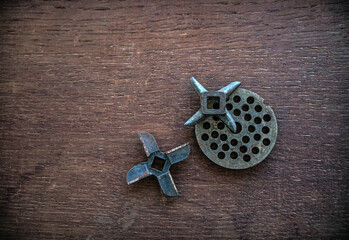
Meat grinders are an essential piece of kitchen equipment for any home cook or professional chef. Whether it’s for grinding beef, pork, poultry, or vegetables, the blades of a meat grinder are designed to efficiently and safely break down food into smaller pieces. It’s important to get the most out of your meat grinder by setting it up and using it correctly.
This post is all about how to choose the correct meat grinder blade direction. We’ll discuss the different types of blades available, factors to consider when selecting the correct direction, and how to install the blade for use.
We’ll also touch on how to properly care for your meat grinder blade and answer some common questions about the process. Whether you’re a novice or an experienced chef, this blog post is sure to help you get the most out of your meat grinder.
What Is The Correct Meat Grinder Blade Direction
Table of Contents
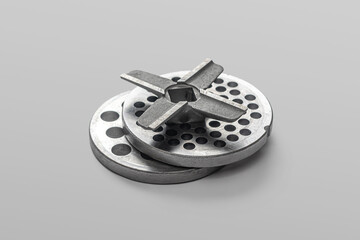
Grinding your own meat at home can be a great way to ensure you are getting fresh and top-quality ingredients for your favorite dishes, as well as giving you more control over the seasoning and the fat-to-meat ratio. But before getting started on your grinding adventure, it is important to know the correct meat grinder blade direction. Depending on the type of grinder you have, this process can vary.
The correct direction to install a meat grinder blade is critical to ensure optimal performance and safety. It is necessary to ensure that the blade spins counterclockwise with the flat side of the blade facing the front.
While certain meat grinders may vary in design, the overall principle remains the same. Proper installation of the blade is crucial to ensure that the grinding process is efficient and risk of injury is minimized. To ensure proper installation, it is best to adhere to the instructions provided by the manufacturer.
Which Way Does Blade Go in A Meat Grinder?
When using a meat grinder, it is important to ensure that the blade is inserted correctly. The sharp side of the blade should face outwards, while the dull side faces inwards. To begin, place the cubed meat into the mincer housing, then use the provided pusher to push the meat down, as you turn the handle clockwise to mince.
If the blade is inserted incorrectly, it can cause jams and other issues with the grinder. It is also important to never use your hands or fingers to move or adjust the blade, as it can cause serious injury. With correct use, the meat grinder can provide a safe and efficient way to mince meat.
What Happens if Your Meat Grinder Blade Direction Is Wrong?
If the blade of a meat grinder is installed in the wrong direction, the appliance cannot efficiently grind the meat. The blades may not cut through the meat or the results may be uneven ground. It is important to double check the blade direction before using a meat grinder to ensure that it is aligned properly.
Not doing so can lead to the poor performance of the appliance or even damage to the blade if it is forced to operate in the wrong direction. It is essential to take the time to familiarize yourself with the various components of the meat grinder and to ensure that they are all working properly and installed correctly.
In what Direction, Should You Feed the Cutting Disc Into the Workpiece?
When using a cutting disc, it is essential to ensure proper direction when feeding the disc into the workpiece. The cutting motion should always be upward. This helps to ensure that the disc cuts cleanly and efficiently, while avoiding any kickback or other hazards.
Proper direction helps to increase the life of the cutting disc by ensuring it does not become overly worn. It is important to remember that the direction of the cutting disc is just as important as its speed and pressure. Taking the time to ensure the proper direction can help to ensure a safe and successful operation.
But, how Do You Know if The Meat Grinder Blade Is Running in Wrong Direction?
If you suspect your meat grinder blade is running in the wrong direction, there are a few signs that can help you confirm your suspicions.
First, you’ll notice that the meat does not pass through the grinder smoothly and efficiently, as the wrong side of the blade is not sharp. The output of the ground meat will be uneven and contain chunks or lumps. You may also find that the grinder is struggling to pass the meat through, or the motor is overheating.
If you suspect the blade is running in the wrong direction, it’s important to stop using the grinder immediately and consult a professional to ensure the blade is replaced and re-fitted correctly.
Also, if your meat grinder is clogging up or not grinding the meat properly, it could be a sign that the blade is running in the wrong direction. If this is the case, the meat will not be cut or ground properly and will not pass through the blade smoothly. To check the blade direction, turn off the power and inspect the blade.
If the blade has teeth facing up, the blade is running in the wrong direction and needs to be reversed. If the teeth are facing downward, the blade is running in the correct direction. If the grinder continues to struggle to grind the meat, you may need to replace the blade or consider purchasing a new grinder.
What Should You Do if Your Meat Grinder Blade Direction Is Wrong?
If the direction of your meat grinder blade is wrong, you will need to take apart the head assembly and re-orient the blade. Before doing this, it is important to be familiar with the assembly process for the particular model of grinder you have.
This will help you avoid any potential mishaps and ensure that the blade is properly and securely re-installed. Once you have removed the blade and switched its direction, you will need to re-assemble the grinder, following the manufacturer’s instructions. Doing this correctly will ensure that your grinder is safe and efficient for use.
Also, Why Is My Grinder Mushing the Meat?
When dealing with a grinder that seems to mush the meat, there are several factors to consider. The most common issue is the size of the plate or blade being used. If the plate or blade is too small, the meat may not be processed properly and ends up being mushed together.
Additionally, the temperature of the meat can affect how it is processed by the grinder. If the meat is too cold, it can become too tough for the grinder to process. Finally, the speed of the grinder can also be a factor.
If the grinder is set too fast, the meat may not have enough time to be processed properly and can become mushed together. To ensure that the grinder is properly processing the meat, it is important to check the size of the plate or blade, the temperature of the meat, and the speed of the grinder.
Also, worn out or missing washers can be a major problem for industrial machinery. Without the washer, the feed screw can enter too far into the cylinders, which can cause the plate to recess inside the cylinder instead of forming an efficient seal. This can lead to a decrease in system performance and an increase in wear on other components.
A worn or missing washer can also lead to a loss in pressure and a decrease in efficiency due to the increased gap between the feed screw and the cylinder. It is therefore important to routinely inspect and replace worn-out washers to ensure that the system is working to its optimal performance. Furthermore, regular maintenance and inspections can help to identify any potential problems early on and allow for corrective action to be taken.
Finally
In conclusion, it is important to always use caution when using a meat grinder, as the blade and auger can easily cause serious injury. Knowing which direction the blade and auger should be turning is also important, as this can affect the quality of your ground meat and the amount of effort required to grind it. Following the manufacturer’s instructions and ensuring the blade and auger are turning in the correct direction will help you get the most out of your meat grinder.

Hi, I’m Iolanda I am a mother of two and know how to whip up satisfying dishes for friends and family in a seemingly effortless way. The blog goal is reader-oriented, So We are always looking for the newest information about the best products on the market to offer product reviews and tutorials to assist users.Have Fun on The Website


